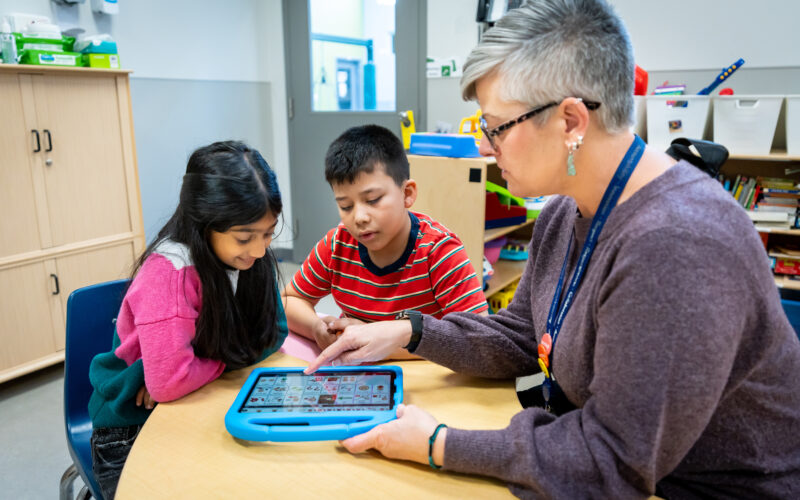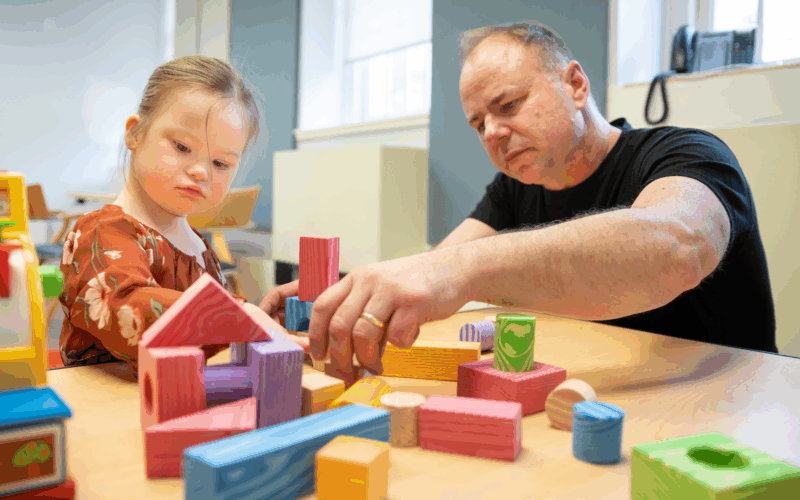No two days are the same for Jisan Phillips.
As a Board-Certified Behaviour Analyst (BCBA) who works as a training and quality assurance supervisor at Surrey Place, Phillips’ days are packed with a variety of rotating responsibilities.
The core of a BCBA’s role is to provide training and support for caregivers, clinicians and staff, develop behaviour plans for clients, analyze data and collaborate with other disciplines.

BCBAs like Phillips examine how triggers in an autistic child’s environment impact their behaviour. This allows the BCBA to assess which environmental triggers need to be addressed to remove barriers to learning.
“Each client is unique, along with each family context, so we work within that to individualize our treatment approach.”
From there, a BCBA determines how to prepare the child to learn a new skill or reduce a behaviour (such as head banging) by replacing it with another behaviour.
“Behaviour is communication, and our job is to teach different ways and alternative ways to communicate,” says Phillips, who has been working with autistic children through Surrey Place’s autism services for 15 years.

Creating learning opportunities for children allows them to develop new and safe ways to share what they have to say with the world, she adds.
Day-to-day responsibilities
BCBAs at Surrey Place design and develop programs and supervise frontline staff, including instructor therapists and applied behaviour analysis (ABA) therapists, who implement programs. BCBAs also ensure data is being collected correctly, analyze information and work closely with behaviour reduction programs.

BCBAs determine what kind of data an instructor therapist should collect when designing behaviour plans. Phillips explains that data collection for a high-frequency behaviour (like skin picking) will look very different from the data collection for a less frequent behaviour. The BCBA determines which data collection system is most appropriate and then trains staff to implement the data collection system being used.
“When we take data and apply reinforcement effectively, we see gains in other disciplines that complement what we do in ABA.”
Next, the BCBA takes data collected by frontline staff, analyzes it, graphs it and draws conclusions about the functions of a client’s behaviours. Once that determination is made, the BCBA will design an appropriate behaviour plan for the client, train staff on the plan and oversee the plan’s implementation.
“We make sure that staff feel supported while implementing the program – that’s our goal,” says Phillips. A BCBA’s caseload typically consists of eight to 15 clients. For ABA services, a BCBA might supervise multiple groups of services.
Supporting other disciplines and enhancing outcomes
Phillips says she has observed first-hand how behaviour analysis supports other disciplines, such as speech-language pathology and occupational therapy, enhancing the outcomes of different types of treatments for children with autism.
“When we take data and apply reinforcement effectively, we see gains in other disciplines that complement what we do in ABA,” says Phillips, adding that Surrey Place strongly emphasizes an interdisciplinary approach when working with clients.
Phillips emphasizes that BCBAs tailor their approach based on each client and family’s needs. When developing treatment plans, BCBAs work closely with families of autistic children and youth. Phillips explains that at Surrey Place, the goal is to develop highly individualized treatment plans that consider a family’s needs, goals and family structure.

“Each client is unique, along with each family context, so we work within that to individualize our treatment approach,” says Phillips. She adds that BCBAs will do “backflips” to ensure they’re meeting clients’ and families’ needs as best they can.
The impact of Surrey Place’s autism services
The most rewarding aspect of Phillips’ job is making a difference for clients and their families. She recalls a 2½ -year-old boy she worked with many years ago, when she was starting in the field as an instructor therapist. She worked with the young child on various foundational skills, including language, independence, self-help and toileting skills.
“Behaviour is communication, and our job is to teach different ways and alternative ways to communicate.”
Several years later, Phillips noticed the client was back at Surrey Place, participating in two different groups.
“He was 16, looking for a job, participating in our groups on employment and how to take the TTC by yourself so that he could get to his job,” says Phillips. “The skills he learned as a young child set the stage for all these other opportunities to be independent. Seeing that progression was so rewarding.”
Phillips finds great satisfaction in being part of a team that supports clients and their families.
“It’s very busy, but we can make a difference for the kids, and that’s the motivation that keeps me going,” she says.
Want to Access Autism Services?
Call our Children & Youth Intake 1-833-575-KIDS (5437)


